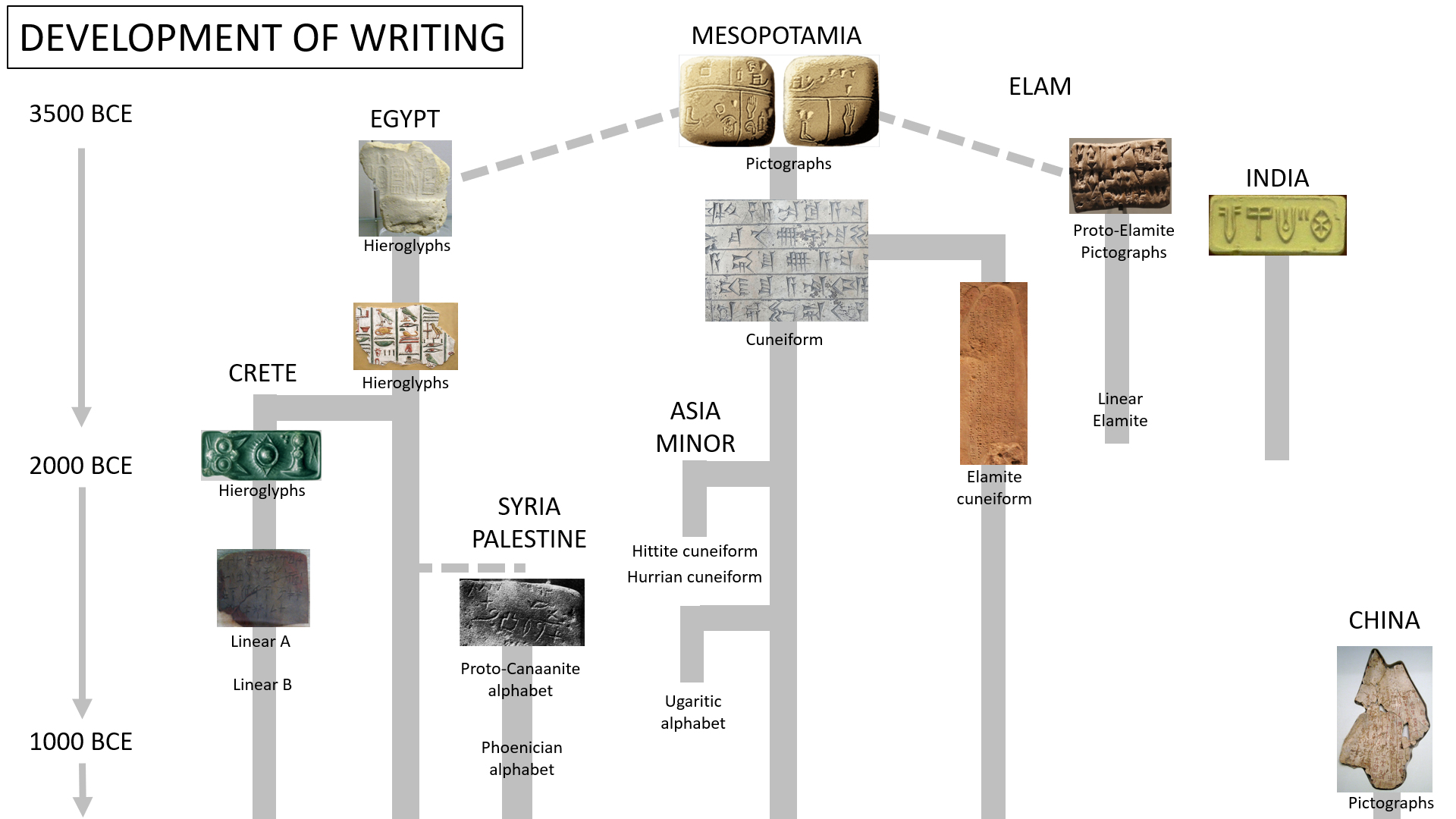Overview
Introduction to writing systems
Writing systems are one of the most significant inventions in human history. They have played a crucial role in the development and preservation of knowledge, culture, and communication. A writing system is a set of symbols or characters used to represent language and record information. It allows individuals to communicate across time and space, enabling the transmission of ideas, stories, and experiences. Writing systems can vary greatly in terms of their complexity and structure. Some writing systems, such as Egyptian hieroglyphs, are pictographic, while others, like Sumerian cuneiform, are based on abstract symbols. The evolution of writing systems is a fascinating journey that reflects the ingenuity and creativity of human beings in their quest for expression and understanding.
Importance of writing systems in human history
Writing systems have played a crucial role in shaping human history. They have allowed us to record and preserve knowledge, enabling the transmission of information across generations. Literacy has been a catalyst for the advancement of civilizations, as it empowers individuals to communicate, learn, and develop new ideas. Writing systems have also facilitated the establishment of organized societies, as they enable the creation of laws, contracts, and administrative records. Moreover, writing systems have served as a medium for artistic expression, with ancient civilizations using them to create epic poems, religious texts, and historical accounts. The development of writing systems has been a transformative milestone in human evolution, marking the transition from oral traditions to written records. It has allowed us to document our collective knowledge and preserve it for future generations, ensuring the continuity of human progress.
Basic components of writing systems
Writing systems consist of several basic components that enable the representation of language in a visual form. These components include graphemes, which are the smallest units of a writing system that represent individual sounds or meanings. Graphemes are combined to form characters, which are the building blocks of written language. Another important component is syntax, which governs the arrangement of words and phrases in a sentence. Additionally, writing systems often incorporate punctuation marks to indicate pauses, emphasis, and other grammatical features. Finally, orthography refers to the standardized rules for spelling and writing in a particular language. Overall, these components work together to create a system of written communication that has been essential for the development and preservation of human knowledge throughout history.
Ancient Writing Systems

Egyptian hieroglyphs
Egyptian hieroglyphs were one of the earliest writing systems used by human societies in ancient times. They were a complex combination of pictures, symbols, and phonetic signs, making them a logographic and phonetic writing system. The hieroglyphs were primarily used by the ancient Egyptians for religious and monumental inscriptions. These inscriptions were often carved on temple walls, tombs, and obelisks, and they provided valuable information about the beliefs, rituals, and history of ancient Egypt. The hieroglyphic script consisted of over 700 signs, each representing a word, a sound, or a combination of both. The decipherment of Egyptian hieroglyphs in the early 19th century by Jean-François Champollion revolutionized our understanding of ancient Egyptian civilization and opened up a window into the rich cultural heritage of the Nile Valley.
Sumerian cuneiform
Sumerian cuneiform is one of the oldest known writing systems, dating back to the 4th millennium BCE. It was developed by the Sumerians in ancient Mesopotamia and was used primarily for administrative and economic purposes. The system consisted of wedge-shaped marks made on clay tablets using a stylus. These tablets were then baked to preserve the writing. Sumerian cuneiform is considered a complex writing system, with over 1,000 different characters representing various sounds, words, and concepts. It played a crucial role in the development of writing and communication in the ancient world, allowing for the recording of laws, literature, and historical events. The decipherment of cuneiform tablets in the 19th century led to a rewritten history of ancient Mesopotamia, providing valuable insights into the culture, society, and achievements of the Sumerians.
Mayan hieroglyphs
Mayan hieroglyphs were the writing system used by the ancient Mayan civilization in Mesoamerica. These hieroglyphs were a combination of logographic and syllabic symbols, representing both individual words and phonetic sounds. The Mayans used these hieroglyphs to record historical events, religious rituals, and astronomical observations. The writing system was highly complex, consisting of over 800 individual glyphs. Mayan hieroglyphs were primarily inscribed on stone monuments, pottery, and bark paper. The decipherment of Mayan hieroglyphs was a significant breakthrough in understanding the Mayan civilization and their culture. Today, scholars continue to study and interpret these ancient texts, providing valuable insights into the history and achievements of the Mayans.
Alphabetic Writing Systems

Phoenician alphabet
The Phoenician alphabet is considered one of the most influential writing systems in history. It originated in the Phoenician city-states around 1200 BCE and was quickly adopted by other civilizations in the Mediterranean region. The Phoenician alphabet consisted of 22 consonant symbols, which made it a more efficient and versatile writing system compared to earlier pictographic and syllabic scripts. This alphabet was the precursor to many modern writing systems, including the Greek and Latin alphabets. The Phoenician alphabet played a crucial role in unlocking ancient Egypt’s hidden past through the decipherment of Egyptian hieroglyphs by Jean-François Champollion in the 19th century. By comparing the Phoenician alphabet with the hieroglyphic signs, Champollion was able to identify common phonetic values and eventually decipher the ancient Egyptian language. This breakthrough in decipherment revolutionized the field of Egyptology and provided valuable insights into the history, culture, and religion of ancient Egypt.
Greek alphabet
The Greek alphabet is one of the most influential writing systems in history. It is the direct ancestor of the Latin alphabet and has been used to write the Greek language for over 2,500 years. The Greek alphabet was derived from the earlier Phoenician alphabet, with some modifications and additions. It consists of 24 letters, including both vowels and consonants. Each letter represents a specific sound, making it a phonemic writing system. The Greek alphabet played a significant role in the development of Western writing systems, including the Latin alphabet, which is now used by many languages around the world. The Greek alphabet also had a profound impact on mathematics and science, as many mathematical and scientific symbols are derived from Greek letters. Overall, the Greek alphabet is a testament to the power and versatility of writing systems in preserving and transmitting knowledge from one generation to another.
Latin alphabet
The Latin alphabet, also known as the Roman alphabet, is one of the most widely used writing systems in the world. It originated from the ancient Phoenician alphabet and was later adopted and modified by the Greeks before being spread by the Romans throughout their empire. The Latin alphabet consists of 26 letters, which are used to represent the sounds of the English language and many other languages. It is a phonetic writing system, meaning that each letter corresponds to a specific sound. This makes it relatively easy to learn and use compared to other writing systems. The Latin alphabet has played a significant role in the development of Western civilization, as it has been used to write important works of literature, scientific discoveries, and historical documents. It has also been adapted and modified to suit the needs of different languages and writing systems, such as the Cyrillic alphabet used in Russia and other Slavic countries. The Latin alphabet continues to be widely used today, both in printed and digital forms, and its influence can be seen in the global dominance of the English language and the spread of Western culture.
Modern Writing Systems

Chinese characters
Chinese characters, also known as hanzi, are one of the oldest writing systems in the world, with a history dating back over 3,000 years. Unlike alphabetic writing systems that use a small number of symbols to represent sounds, Chinese characters are logographic, meaning that each character represents a whole word or concept. This makes learning Chinese characters a challenging task, as there are thousands of characters to memorize. However, the logographic nature of Chinese characters also allows for a high level of precision and nuance in written communication. Chinese characters are used not only in China but also in other East Asian countries such as Japan and Korea, where they are known as kanji and hanja, respectively. The widespread use of Chinese characters in East Asia underscores their cultural and historical significance in the region.
Arabic script
The Arabic script is one of the most widely used writing systems in the world. It originated in the 4th century CE and is derived from the Aramaic script. The Arabic script is known for its elegant and flowing style, with each letter having different forms depending on its position in a word. It is primarily used to write the Arabic language, but it is also used for writing other languages such as Persian, Urdu, and Kurdish. The script is written from right to left, and it is composed of a combination of consonants and diacritical marks to represent vowels. The Arabic script has played a significant role in the spread of Islam and the preservation of Islamic literature and culture. It has also influenced other writing systems, such as the Persian and Urdu scripts. The beauty and complexity of the Arabic script can be seen in its calligraphy, which is highly regarded as an art form in the Islamic world.
Cyrillic script
The Cyrillic script is an alphabetic writing system used by various languages, most notably Russian, Bulgarian, and Serbian. It was developed in the First Bulgarian Empire during the 9th century AD and is based on the Greek alphabet. The Cyrillic script played a significant role in the spread of Christianity in Eastern Europe, as it was used to translate religious texts into the vernacular languages. Today, it is one of the most widely used writing systems in the world, with over 250 million people using it as their primary writing system. The Cyrillic script is known for its distinctive characters, which include both uppercase and lowercase letters. It is a phonemic script, meaning that each letter represents a specific sound. The script has undergone various modifications and reforms throughout its history, but it has remained an important part of the cultural and linguistic identity of the countries that use it.
Avid Writer with invaluable knowledge of Humanity!
Upcoming historian with over 30 million views online.
“You make your own life.”





